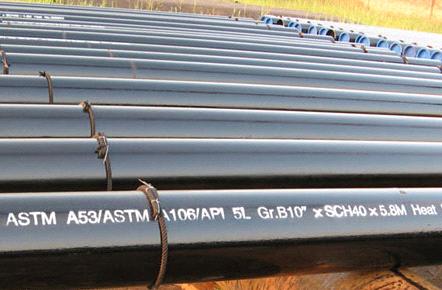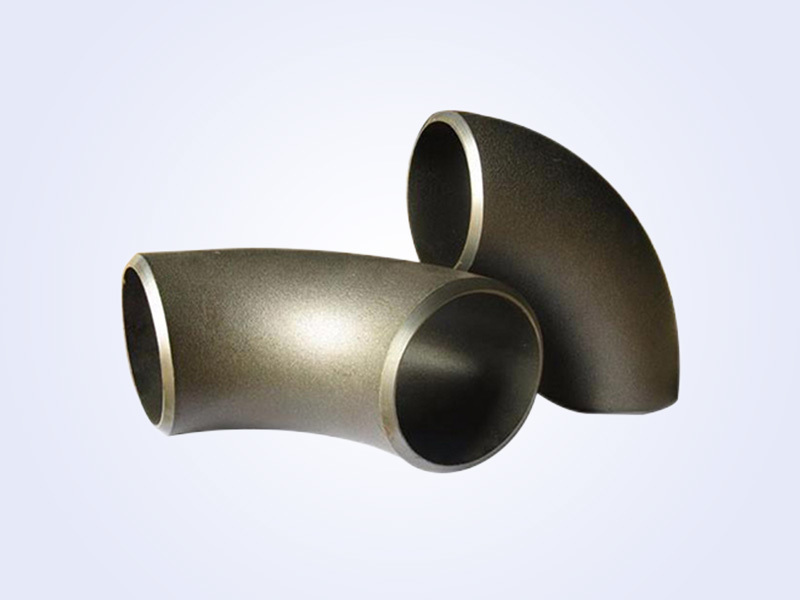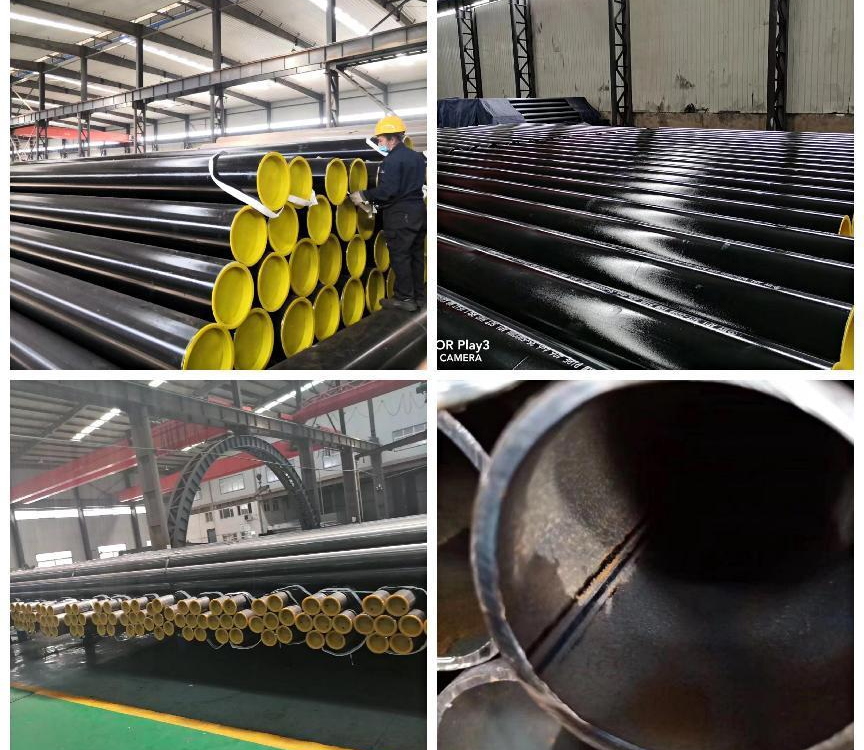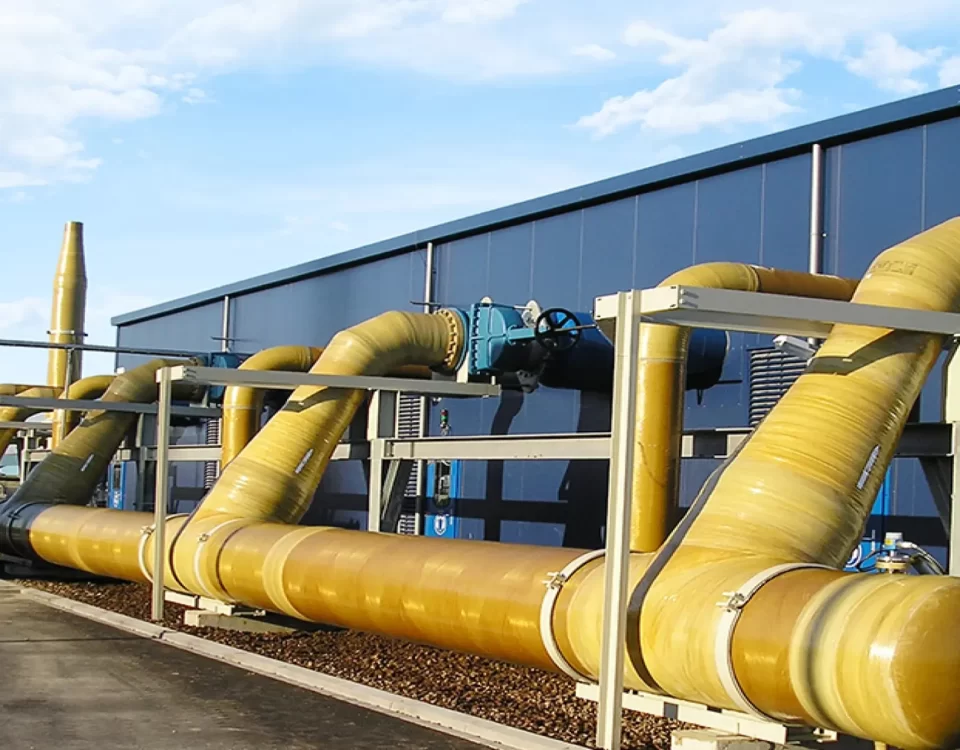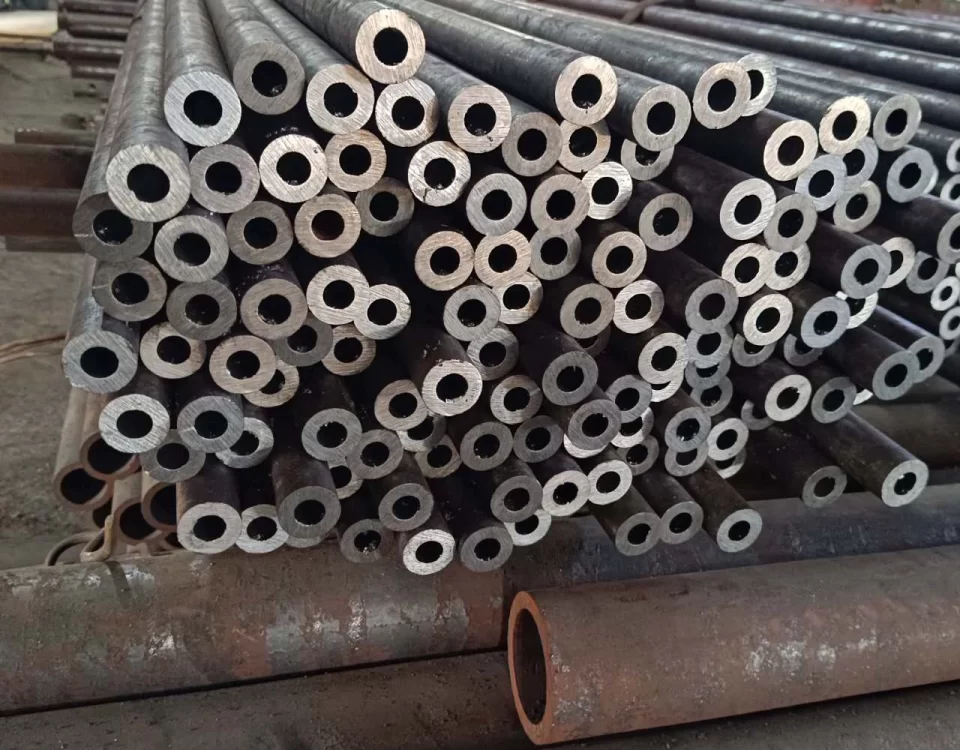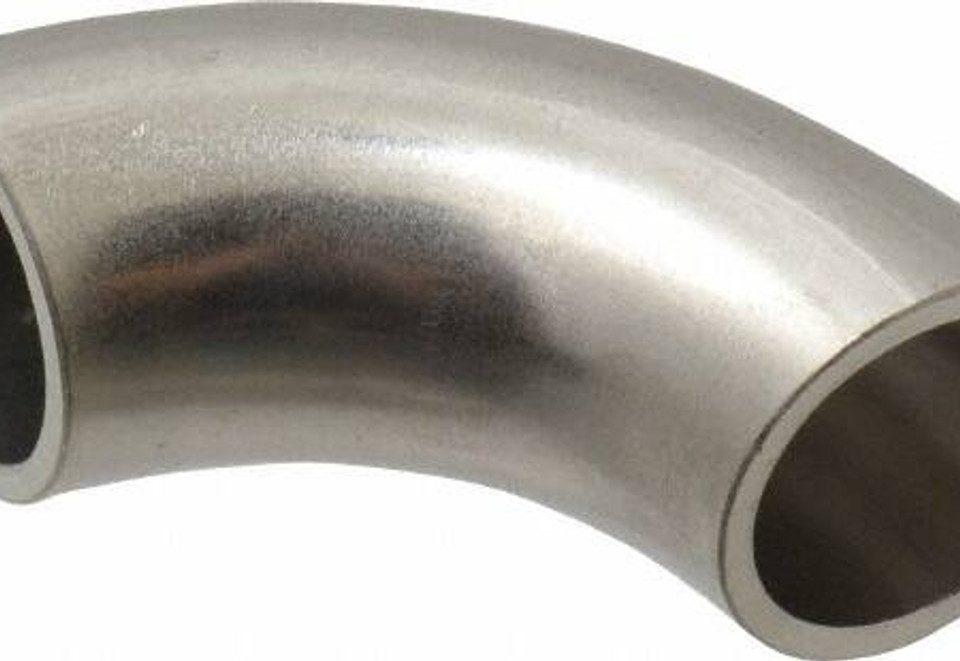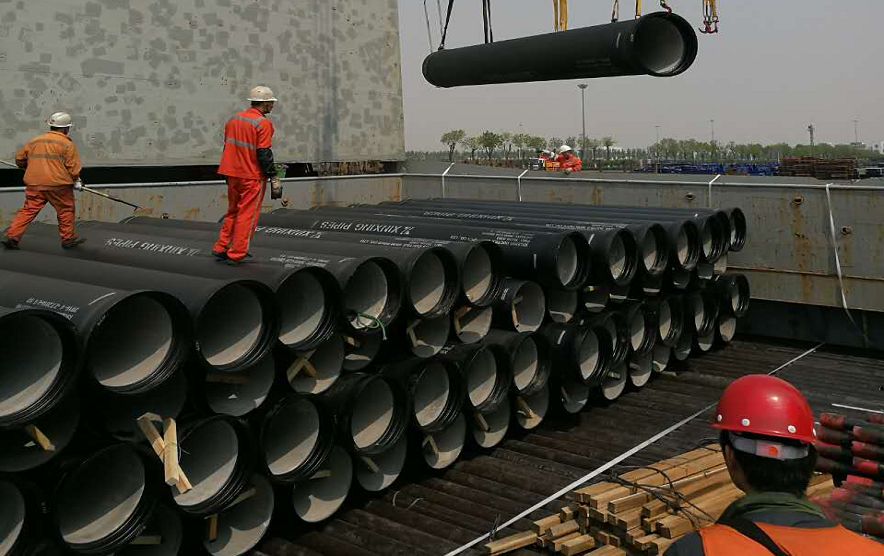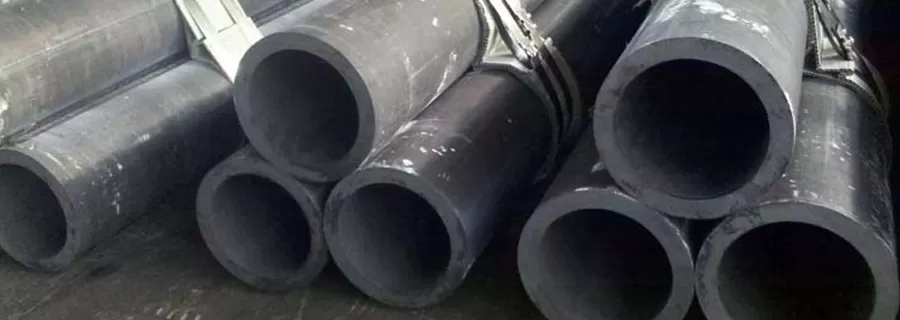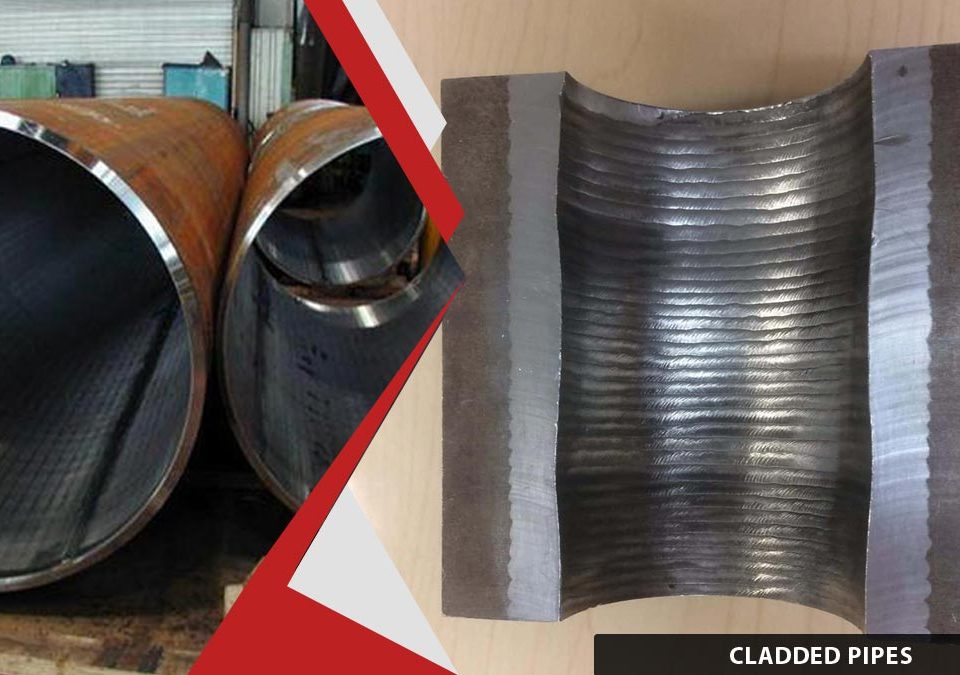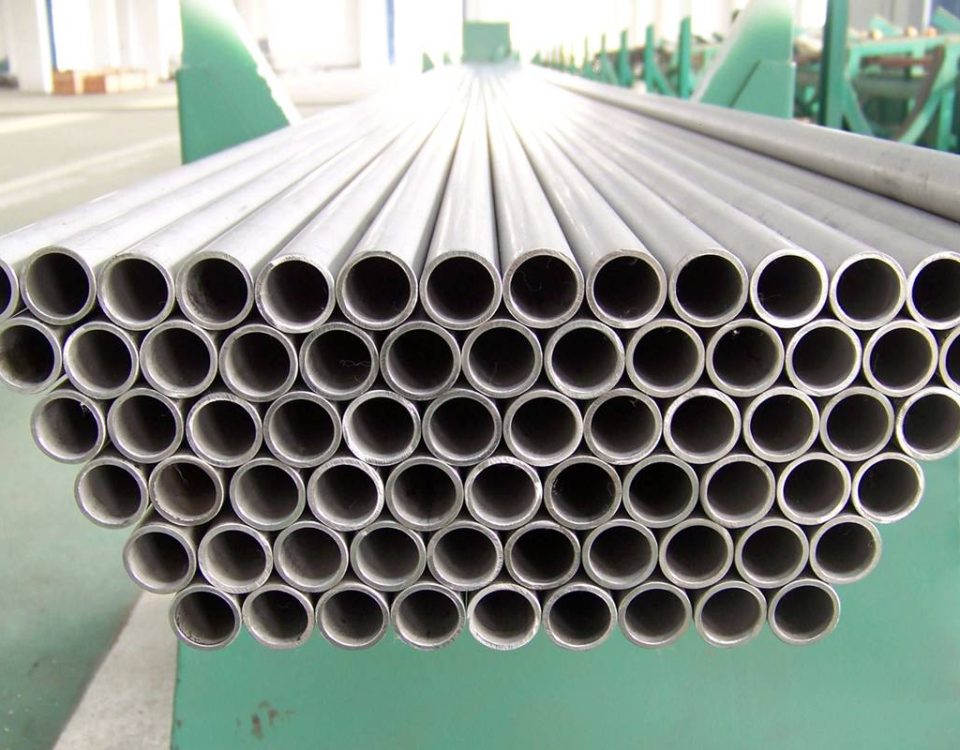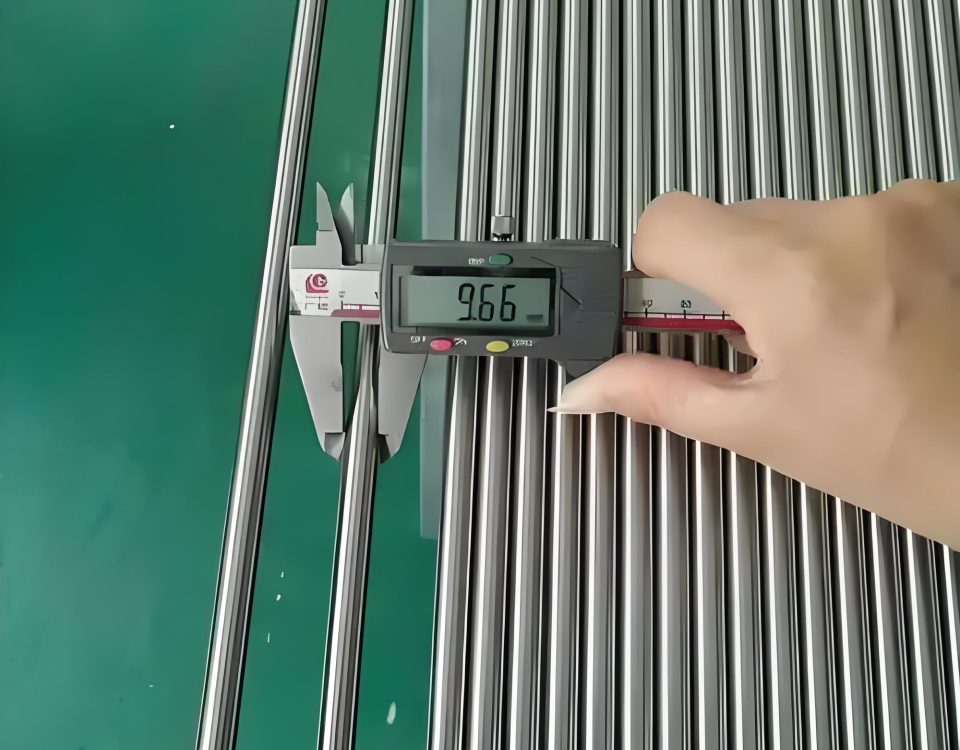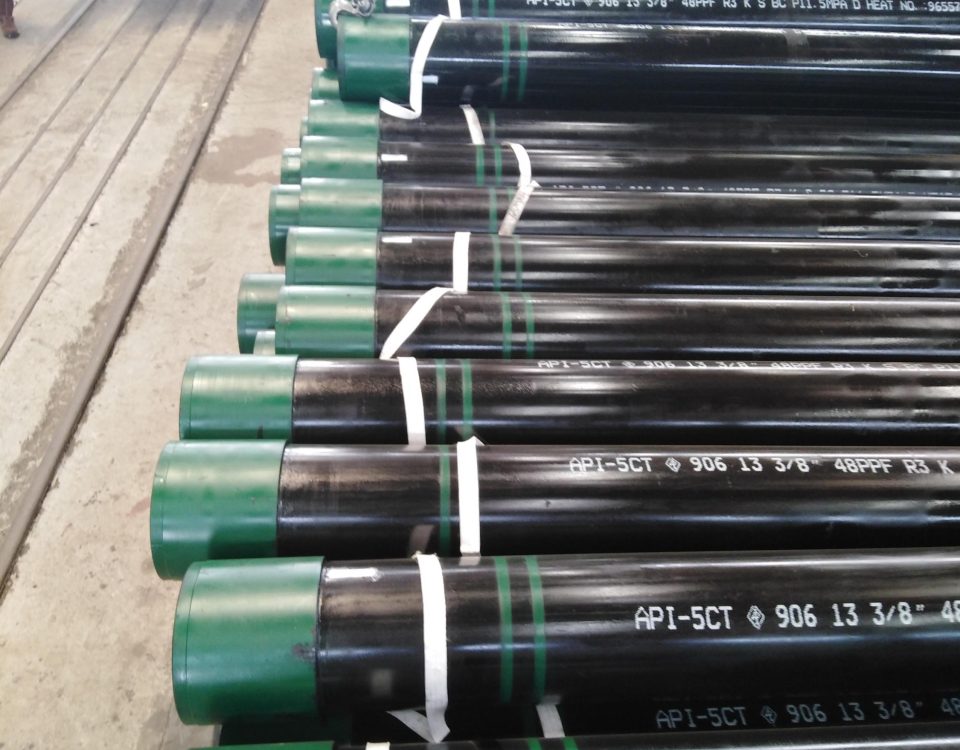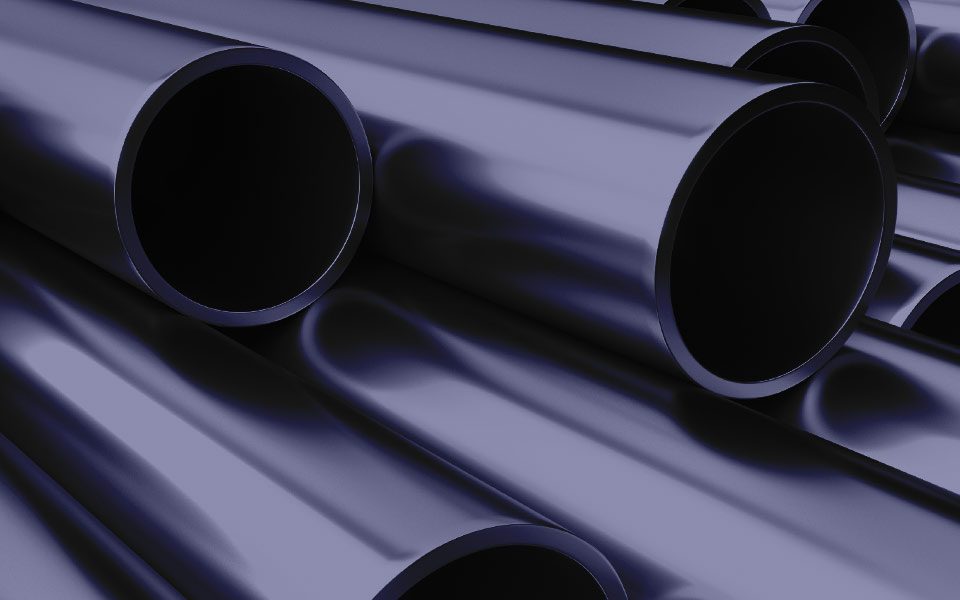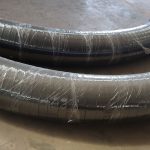
Induction pipe bending and steel elbow fittings differences
October 5, 2023
New Type Seamless Steel Pipes Manufacturing for Automobiles
October 14, 2023A Comprehensive Study: A53 Steel Pipe, Steel Tube, and Their Differences
Introduction
In the realm of steel products, understanding the subtle differences between similar terminologies and classifications is crucial when selecting materials for a specific application. This paper will explore the tensile strength requirements of the A53 steel pipe, differentiate between steel pipes and steel tubes, and delve into the differences between A53 Grade A and A53 Grade B. Furthermore, it will explain the implications of coating, welding, and galvanizing on A53 Grade A and B.
Chemical composition and tensile requirements of ASTM A53
| Chemical composition, % | |||||||||
| Grade | C, max | Mn, max | P, max | S, max | Cr③, max | Cu③, max | Mo③, max | Ni③, max | V③, max |
| A | 0.25① | 0.95 | 0.050 | 0.045 | 0.40 | 0.40 | 0.15 | 0.40 | 0.08 |
| B | 0.30② | 1.20 | 0.035 | 0.035 | 0.40 | 0.40 | 0.15 | 0.40 | 0.08 |
| Remark:
①For each reduction of 0.01% below the specified C maximum, an increase of Mn above the specified maximum will be permitted up to a maximum of 1.35% ②For each reduction of 0.01% below the specified C maximum, an increase of Mn above the specified maximum will be permitted up to a maximum of 1.65% ③These five elements combined shall not exceed 1% |
|||||||||
| Tensile requirements | |||||||||
| Grade | Tensile strength, min, MPa | Yield strength, min, MPa | |||||||
| A | 330 | 205 | |||||||
| B | 415 | 240 | |||||||
Overview of ASTM A53 Carbon Steel Alloy.
Introduction
ASTM A53 is a carbon steel alloy widely used in structural applications and low-pressure pipelines. This versatile material balances strength and ductility, making it suitable for a variety of applications in different industries. In this comprehensive overview, we delve into the specifications, types, grades, and common uses of ASTM A53 carbon steel pipe.
ASTM A53 Carbon Steel Pipe Specifications
ASTM A53 (ASME SA53) carbon steel pipe is a specification that covers both seamless and welded black and hot-dipped galvanized steel pipe in Nominal Pipe Sizes (NPS) from 1/8″ to 26″. The standard is designed for pressure and mechanical applications, but it is also suited to ordinary uses in steam, water, gas, and air lines.
ASTM A53 comes in three types (F, E, S) and two grades (A, B):
A53 Type F is manufactured with a furnace butt weld or may have a continuous weld (Grade A only).
A53 Type E features an electric resistance weld (Grades A and B).
A53 Type S is a seamless pipe and is found in Grades A and B.
Among these, A53 Grade B Seamless is the most popular product under this specification. Furthermore, A53 pipe is commonly dual certified to A106 B Seamless pipe, another widely used specification.
ASTM A53 and International Material Equivalents
ASTM A53 is an American standard specification, but the material has equivalents in other international standards. Notably, ASTM A53-F corresponds to China’s Q235 material, A53-A corresponds to China’s No. 10 material, and A53-B corresponds to China’s No. 20 material.
ASTM A53 Grade B Pipe eight Thickness
| ASTM A53 Grade B Pipes Types | Out diameter | Wall thickness | Length |
|---|---|---|---|
| ASTM A53 Grade B Seamless Pipes (Custom Sizes) | 1/2″ NB – 60″ NB | SCH 5 / SCH 10 / SCH 40 / SCH 80 / SCH 160 | Custom |
| ASTM A53 Grade B Welded Pipes (in Stock + Custom Sizes) | 1/2″ NB – 24″ NB | As per requirement | Custom |
| SA53 gr b ERW (Custom Sizes) | 1/2″ NB – 24″ NB | As per requirement | Custom |
| ASTM A53 Grade B SAW Pipes | 16″ NB – 100″ NB | As per requirement | Custom |
A53 Steel Pipe Tensile Strength Requirements
A53 steel pipe, a standard specification for pipe, steel, black and hot-dipped, zinc-coated, welded, and seamless, is widely used in numerous sectors including mechanical and pressure applications, as well as ordinary uses in steam, water, gas, and air lines. One of the essential properties of A53 steel pipe is its tensile strength.
Tensile strength, also known as ultimate tensile strength (UTS), is the maximum stress a material can withstand while being stretched or pulled before breaking. For A53 steel pipe, both Grade A and Grade B, the tensile strength requirements are defined by the American Society for Testing and Materials (ASTM) standards.
According to the ASTM A53 specification, the tensile strength of A53 Grade A should be at least 48,000 psi (330 MPa), while for Grade B, it should be at least 60,000 psi (415 MPa). These values are for pipes in sizes up to NPS 2½ inclusive; larger pipe sizes have slightly different requirements. Meeting these tensile strength requirements is crucial for the pipe to withstand the stresses it will be subjected to in its intended application.
The Difference Between a Steel Pipe and a Steel Tube
The terms ‘steel pipe’ and ‘steel tube’ are often used interchangeably. However, from a technical perspective, there are subtle differences between them, primarily in how they are dimensioned and their applications.
A ‘steel pipe’ is typically dimensioned by the ‘nominal pipe size’ (NPS) and ‘schedule’ (wall thickness), and its primary use is in the transport of products (fluids, gases, or solids). The term ‘pipe’ is generally used when the passage’s primary purpose is to transport a product from one place to another.
On the other hand, a ‘steel tube’ is typically dimensioned by the ‘outside diameter’ (OD) and wall thickness, and it is often used in structural applications. The term ‘tube’ is generally used when the product’s main purpose is to provide structural support.
While these differences exist, many industries use the terms ‘pipe’ and ‘tube’ interchangeably, and the intended application often determines the terminology used.
Difference Between A53 Grade A and A53 Grade B
ASTM A53 steel pipe comes in two grades: A53 Grade A and A53 Grade B. The grades denote varying levels of mechanical properties such as tensile strength and yield strength.
As mentioned earlier, the minimum tensile strength of A53 Grade A is 48,000 psi (330 MPa), while for A53 Grade B, it’s 60,000 psi (415 MPa). Similarly, the minimum yield strength for A53 Grade A is 30,000 psi (205 MPa), while for Grade B, it’s 35,000 psi (240 MPa).
The choice between A53 Grade A and Grade B will depend on the requirements of the specific application, with Grade B generally being suitable for applications requiring higher strength.
A53 Grade A and A53 Grade B Coated, Welded, and Galvanized
When it’s stated that A53 Grade A and A53 Grade B are available coated, it means that these pipes can have a protective coating applied to them. This coating can provide additional protection against corrosion, enhancing the pipe’s longevity, especially in corrosive environments.
The term ‘welded’ refers to the manufacturing process used to produce these pipes. A53 Grade A and Grade B pipes can be made using the Electric Resistance Welded (ERW) method, where the pipe is manufactured from a sheet of steel which is then rolled into a cylinder and the seam welded using electric resistance welding.
When A53 Grade A and B are said to be ‘galvanized,’ it means they have undergone a process where a protective zinc coating is applied to prevent rusting. Galvanizing can significantly enhance the pipe’s resistance to corrosion, making it suitable for outdoor or high-moisture applications.
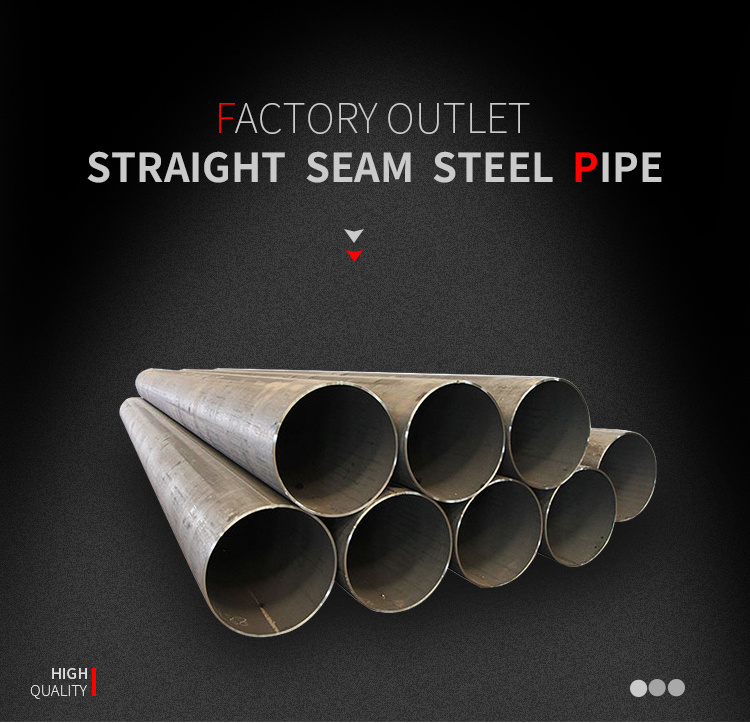
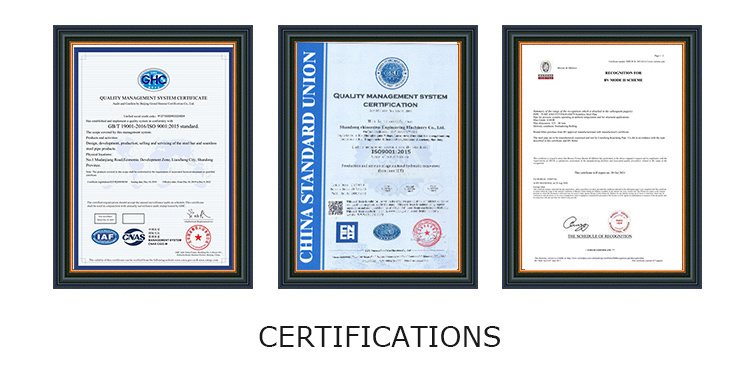
Conclusion
This paper has explored the various aspects of A53 steel pipe, including its tensile strength requirements and the differences between A53 Grade A and Grade B. It also differentiated between steel pipes and steel tubes and explained the implications of coating, welding, and galvanizing. Understanding these aspects is crucial for engineers, designers, and end-users when selecting materials for specific applications, ensuring optimal performance, efficiency, and longevity# A Comprehensive Study: A53 Steel Pipe, Steel Tube, and Their Differences
Introduction
In the realm of steel products, understanding the subtle differences between similar terminologies and classifications is crucial when selecting materials for a specific application. This paper will explore the tensile strength requirements of the A53 steel pipe, differentiate between steel pipes and steel tubes, and delve into the differences between A53 Grade A and A53 Grade B. Furthermore, it will explain the implications of coating, welding, and galvanizing on A53 Grade A and B.
A53 Steel Pipe Tensile Strength Requirements
A53 steel pipe, a standard specification for pipe, steel, black and hot-dipped, zinc-coated, welded, and seamless, is widely used in numerous sectors including mechanical and pressure applications, as well as ordinary uses in steam, water, gas, and air lines. One of the essential properties of A53 steel pipe is its tensile strength.
Tensile strength, also known as ultimate tensile strength (UTS), is the maximum stress a material can withstand while being stretched or pulled before breaking. For A53 steel pipe, both Grade A and Grade B, the tensile strength requirements are defined by the American Society for Testing and Materials (ASTM) standards.
According to the ASTM A53 specification, the tensile strength of A53 Grade A should be at least 48,000 psi (330 MPa), while for Grade B, it should be at least 60,000 psi (415 MPa). These values are for pipes in sizes up to NPS 2½ inclusive; larger pipe sizes have slightly different requirements. Meeting these tensile strength requirements is crucial for the pipe to withstand the stresses it will be subjected to in its intended application.
The Difference Between a Steel Pipe and a Steel Tube
The terms ‘steel pipe’ and ‘steel tube’ are often used interchangeably. However, from a technical perspective, there are subtle differences between them, primarily in how they are dimensioned and their applications.
A ‘steel pipe’ is typically dimensioned by the ‘nominal pipe size’ (NPS) and ‘schedule’ (wall thickness), and its primary use is in the transport of products (fluids, gases, or solids). The term ‘pipe’ is generally used when the passage’s primary purpose is to transport a product from one place to another.
On the other hand, a ‘steel tube’ is typically dimensioned by the ‘outside diameter’ (OD) and wall thickness, and it is often used in structural applications. The term ‘tube’ is generally used when the product’s main purpose is to provide structural support.
While these differences exist, many industries use the terms ‘pipe’ and ‘tube’ interchangeably, and the intended application often determines the terminology used.
Difference Between A53 Grade A and A53 Grade B
ASTM A53 steel pipe comes in two grades: A53 Grade A and A53 Grade B. The grades denote varying levels of mechanical properties such as tensile strength and yield strength.
As mentioned earlier, the minimum tensile strength of A53 Grade A is 48,000 psi (330 MPa), while for A53 Grade B, it’s 60,000 psi (415 MPa). Similarly, the minimum yield strength for A53 Grade A is 30,000 psi (205 MPa), while for Grade B, it’s 35,000 psi (240 MPa).
The choice between A53 Grade A and Grade B will depend on the requirements of the specific application, with Grade B generally being suitable for applications requiring higher strength.
A53 Grade A and A53 Grade B Coated, Welded, and Galvanized
When it’s stated that A53 Grade A and A53 Grade B are available coated, it means that these pipes can have a protective coating applied to them. This coating can provide additional protection against corrosion, enhancing the pipe’s longevity, especially in corrosive environments.
The term ‘welded’ refers to the manufacturing process used to produce these pipes. A53 Grade A and Grade B pipes can be made using the Electric Resistance Welded (ERW) method, where the pipe is manufactured from a sheet of steel which is then rolled into a cylinder and the seam welded using electric resistance welding.
When A53 Grade A and B are said to be ‘galvanized,’ it means they have undergone a process where a protective zinc coating is applied to prevent rusting. Galvanizing can significantly enhance the pipe’s resistance to corrosion, making it suitable for outdoor or high-moisture applications.
Conclusion
This paper has explored the various aspects of A53 steel pipe, including its tensile strength requirements and the differences between A53 Grade A and Grade B. It also differentiated between steel pipes and steel tubes and explained the implications of coating, welding, and galvanizing. Understanding these aspects is crucial for engineers, designers, and end-users when selecting materials for specific applications, ensuring optimal performance, efficiency, and longevity

